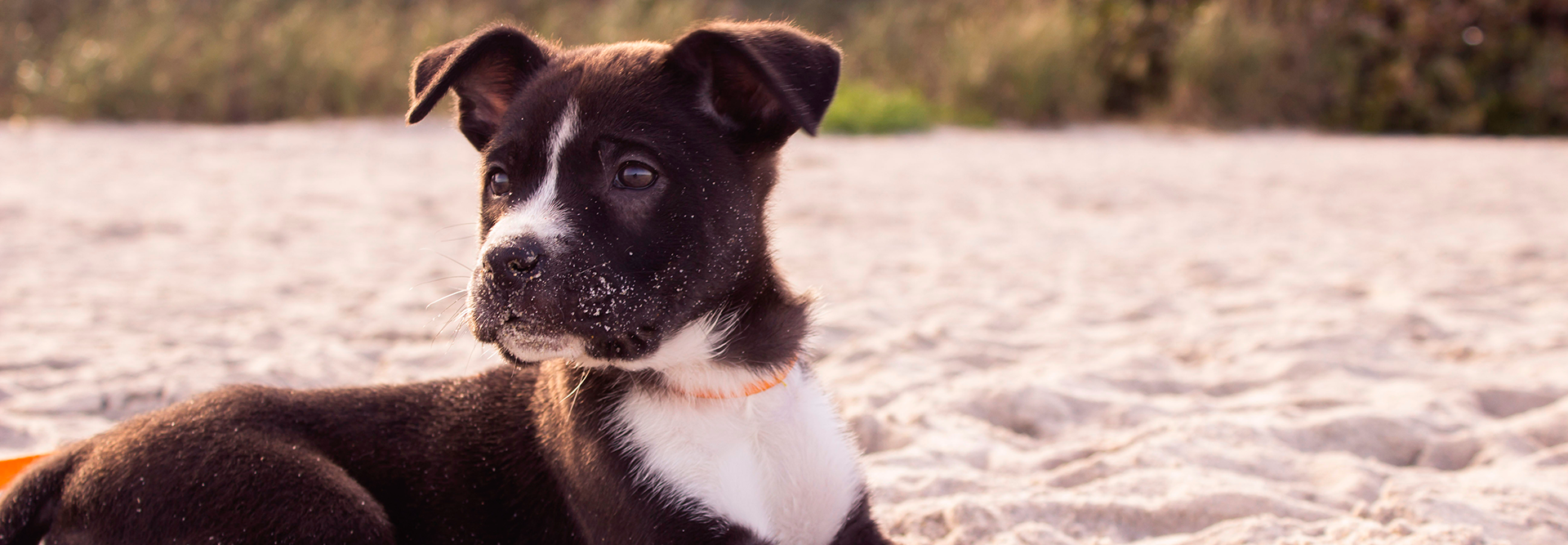
Sweet-natured and goofy, Boxers have gained an outstanding reputation as the perfect family dog. Originally from Germany, Boxers have evolved from their hunting days to become wonderful four-legged friends. These dogs just love playing and acting silly around you and your family members, especially young children. Their patience and obedience make them a joy to […]
Sweet-natured and goofy, Boxers have gained an outstanding reputation as the perfect family dog. Originally from Germany, Boxers have evolved from their hunting days to become wonderful four-legged friends. These dogs just love playing and acting silly around you and your family members, especially young children. Their patience and obedience make them a joy to be around.
While Boxers aren’t aggressive or stubborn, they can be guarded around strangers. Boxers prioritize their family’s safety above all else, so it’s common to see their upbeat personality tone down around guests. These personal traits, along with their charming good looks, are just some of the many reasons why they’re so popular!
Are you searching for your dream puppy? The Boxer just might be your perfect match. Before you make a decision, here’s a detailed profile about these silly, mischievous dogs!
Boxers are recognizable for their wrinkled forehead, dark eyes, and stocky build. Their beautiful round eyes give the Boxer a permanent curious expression. Their heads are short and square-shaped, possessing a strong muzzle, folded ears (when uncropped), and a firm jaw. Boxers also have a short, low-maintenance coat that comes in tan, brindle, and white. Although most Boxers have a dark face or muzzle, some have white markings on their face and body. There’s no denying how gorgeous and lovable these dogs are. You may find yourself falling for a Boxer once you’ve met one in person!
Boxers are big dogs. Males can stand as high as 25 inches tall (weighing between 65 to 80 pounds) while females run a few inches shorter (23 inches tall). Their size makes them excellent companions for a number of sports like agility and herding.
Like other Working group dogs, Boxers are silly, outgoing, and energetic dogs. They love having something to do, whether it’s through exercise or playtime. Boredom or lack of exercise can make a Boxer anxious, leading to destructive behavior around your home. Make sure you have ample space in your backyard to play with your Boxer. It’s also a good idea to take these fur-babies out on walks or to the dog parks for their daily social interaction. Also, never leave a Boxer off of their leash; this breed may end up leaping or jumping onto strangers.
Intelligent, affectionate, humorous—Boxers are dogs with sunny personalities. They’re incredibly loyal to their families, preferring to spend time with them. This loyalty also makes them super protective at the first sight of danger. If you notice your Boxer barking, check out what’s going on. Not many Boxers bark without a good reason behind it. Boxers are also known for clowning around with their loved ones. Their ultimate joy is seeing you happy, and they will do what they can to please you. They can be patient and gentle with children if their jumping habit is reduced through training. Overall, these four-legged goofballs can be a wonderful addition to families that can handle their energetic nature.
The Boxer has a short, smooth coat that shines when it’s well-kept. Boxers should be brushed at least once or twice a week to remove loose hairs and dander. These dogs do not require frequent bathing; one bath a month is usually enough unless they get dirty. You will also need to trim a Boxer’s nails and clean their ears once a month. Like other dogs, make sure their teeth are brushed regularly, keeping away plaque and tartar buildup.
Boxers are highly intelligent dogs but they tend to goof around a little too much! This can make training a challenge (but not impossible) since your Boxer may become bored with your repetitive commands. Don’t become discouraged; be firm with your Boxer puppy. Let them know who’s boss with consistency and rewards. You should only reward your Boxer pup when they’ve completed the command—otherwise, they will try to test your patience. Start training Boxers as early as possible to get the best results.
The Boxer originates from Germany, where it was bred as a working dog in the late 1800s. Their ancestors were a mix of the extinct Bullenbeisser breed, Mastiff, and possibly the Great Dane. Initially, Boxers worked as bull-baiting dogs, and would later help butchers control their cattle. Some Boxers would also be trained as police, guide dogs, and messenger dogs during World War I. During the 1940s and 1950s, the Boxers popularity rose up in numbers, leading to the strong and elegant breed we know today!
Boxers are one of the best companions you can have in your home. Their infectious muzzle, loyal nature, and sense of humor means you will always have a great four-legged friend with you. However, you must ensure that you’re ready to handle a high-energy dog like a Boxer. Boxers love their families and having an activity, so you must be able to meet their demands. Once you have sufficient room in your home, and time to spend, your Boxer will be the happiest pup in the world!
Looking for a smaller breed? Take a quick look at our blog, Miniature Schnauzer: Dog Breed Profile for more information about these cuddly pooches!